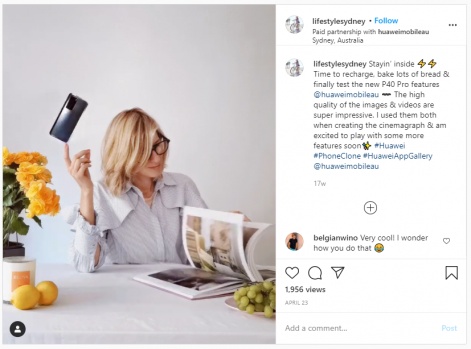This is a guest post written by Aaron Brooks. Brooks is the co-founder of influencer marketing platform, Vamp.
Thanks to lockdown we already know we’re in for a year of re-runs on TV. Social distancing has made it impossible for shoots, with their many stylists, photographers and assistants, to go ahead and for new content to be created.
Magazines are in the same boat and we’ve seen quick-thinking publications, like Vogue, swap their usual celebrity covers for beautiful illustrations.
In advertising, digital content creators and influencers have proved a much-needed resource for brands. These one-man bands are usually the creative director, stylist, photographer, model and editor, all rolled into one. They’re used to creating content alone and have been able to continue, safely and at home. With our creative community’s help, Vamp has been able to run more than 480 brand campaigns since mid-March - and counting.
But what’s most surprising is the quality of this work. Far from creators simply making do, within these strict confines, their innovation and creativity has soared. All around the world, we’ve seen influencers pushing their innovative methods even further.
Global creativity spike
When lockdown began and flights were grounded, travel influencers were singled out as the group most likely to suffer. Throughout the past few months, they’ve been forced to innovate in order to complete their brand sponsorship deals and keep creating content for their audience.
A great example is @nando_kuschel, who frequency featured his van in his travel photography. When he found he wasn’t able to travel, he got creative. Spray painting a miniature toy van to match his own and recreating outdoor scenes at home in Germany.
Others, like Sydney-based @Anniesbucketlist have flexed their editing skills. In this post, Annie created a dreamlike Alice in Wonderland scene, with items found in her home and help from Photoshop. Meanwhile, @lifestylesydney used this campaign as an opportunity to revive her cinematography skills, creating an engaging moving image from a simple at home set up.
Hashtags have been used by creatives to share their work in isolation on Instagram. Bosnian Vamp creator @iddavanmunster told us she’d been using the #lockdownphotochallenge2020 hashtag to showcase her work and gain inspiration from others.
We shouldn’t be so surprised. Boundless creativity is what won these digital content creators recognition in the first place. They are experimental and imaginative by their very nature. Due to lazy misconceptions, quality and innovation isn’t always associated with the influencer space. Something I hope will change.

Value for brands
One of the main beneficiaries of this renewed lease of creativity is brands. Influencer collaborations have been climbing for years, but in these COVID-19 times, they’ve gained even more significance.
With stores closed, retailers lost customer touchpoints so leaned heavily on social media to communicate with customers. Particularly in those early days, when interruptions to service, availability of products and changes to their health and safety precautions all needed to be shared.
Not only did social media allow brands to keep their customers up-to-date on a developing situation, it met them where they were. In lockdown social media usage spiked. 76 per cent of internet users aged between 16 - 64 were spending more time using their smartphones by April, according to GlobalWebIndex.
Influencers fitted neatly into these strategies and were a scalable solution for brands. Social influencer campaigns could be adapted easily, offering flexibility not found in media plans made months in advance.
Brands like Westfield pivoted their campaign, using influencers to share their new contactless click and collect services, while Woolworths focused their Easter campaign on activities locked down families could amuse themselves with at home.
Even campaigns that didn’t pivot were made pandemic-relevant by influencers. The content they share is rooted in their everyday experience. Creators had no choice but to adapt and acknowledge their lifestyle shift, shared by their followers. This common experience helped brands achieve a sense of humanity and relatability that is difficult to muster on a faceless brand account.
Looking ahead
Influencer marketing continues disprove those in the industry that once doubted its value. Not only with its quality of content, but with its impact. This year has really shown what they can do. Even to brands who have never tried out the channel until now are finally realising their potential.
This makes me extremely hopeful for the future of influencer content. As does our habit for online shopping, which has become more entrenched throughout the pandemic. If customers are more willing to convert online, after seeing an influencer’s post, that’s likely to strengthen the ROI derived from campaigns even further.















